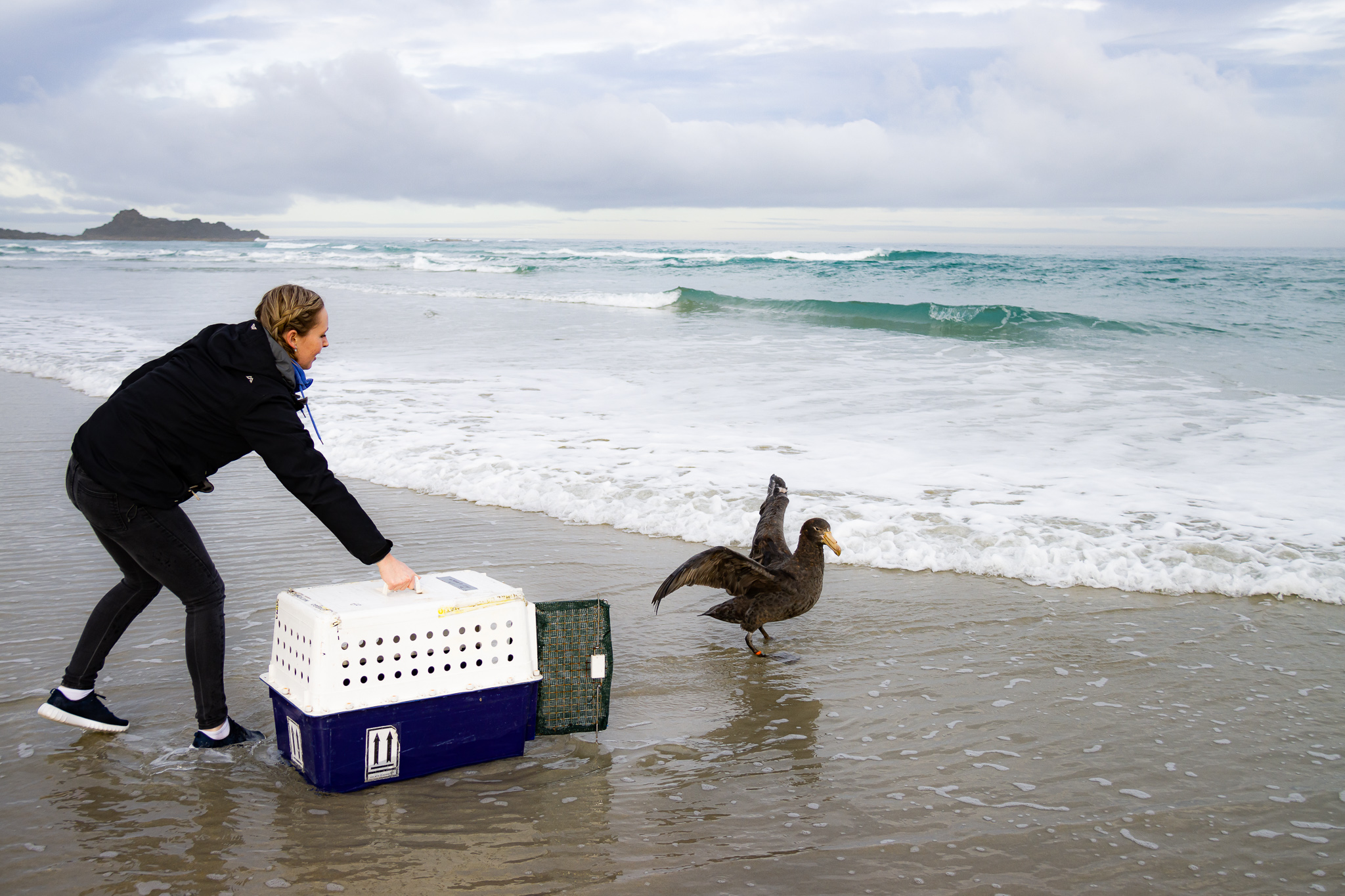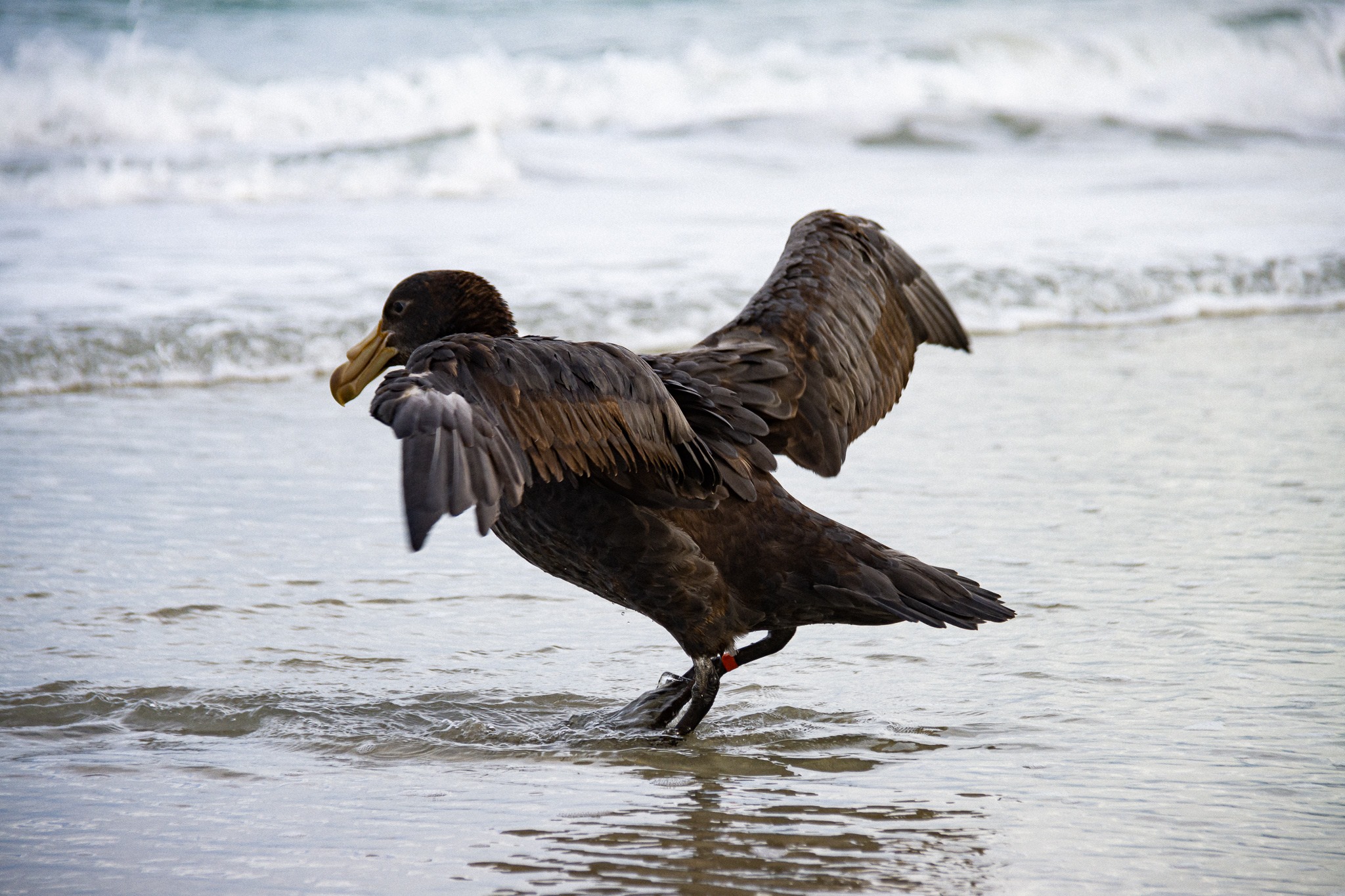
Releasing the Northern Giant Petrel
A Northern Giant Petrel Macronectes halli was rescued and brought to the Wildlife Hospital, Dunedin in New Zealand by the Department of Conservation in Invercargill last month. The bird described as “weak and underweight on arrival” had an old fracture on its left wing that had started healing “a bit skew”. From its dark-brown plumage it is possibly a juvenile although its outstretched wing shows primary moult occurring. Following X-rays by the hospital’s vets the wildlife hospital reported:
“The fracture to the wing is not too badly displaced and has started to heal pretty well. It is not perfectly straight although he seems to use the wing very well. Our vet team have weighed up the pros and cons of performing surgery to straighten the bone or leave him be. Surgery of course always comes with risks because of anaesthesia. In this case we would need to pluck feathers, re-fracture the bone and pin it to straighten it. All of this would extend his hospital stay by months. The team have decided that the cons of prolonged hospitalization and the risk of surgery far outweigh releasing him with a slightly crooked wing that is unlikely to have much impact on his ability to fly. Large seabirds are also at risk of contracting aspergillosis when in a hospital situation and pododermatitis (bumblefoot/pressure sores) from being on land so long.”
Following being colour-banded, the bird was released from a sandy beach on 7 July - from where it swam out to sea.

On the beach after release
Watch video clips of the giant petrel being fed fish and swimming in a rehabilitation pool on the Hospital’s Facebook page.
The hospital is a veterinary facility specialising exclusively in the treatment of New Zealand’s native species.
UPDATE: Following an enquiry, the hospital has confirmed that the bird was seen flying after release.
John Cooper, ACAP Information Officer, 10 July 2020, updated 11 July 2020

 English
English  Français
Français  Español
Español